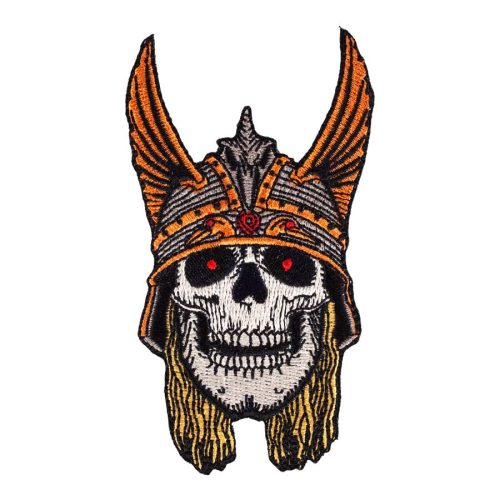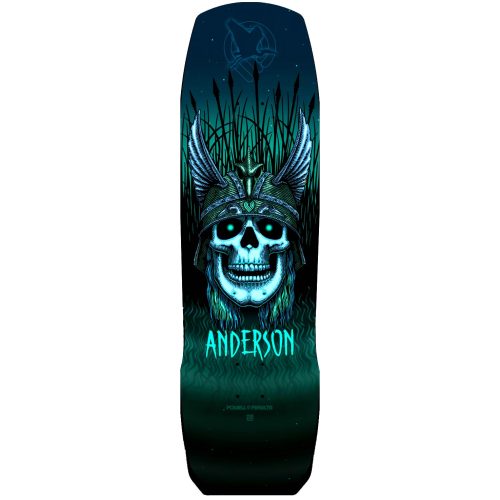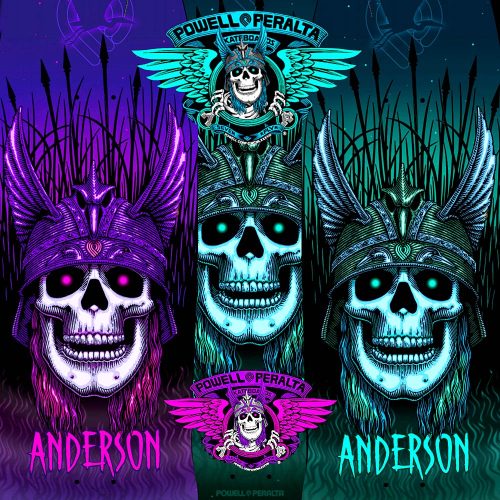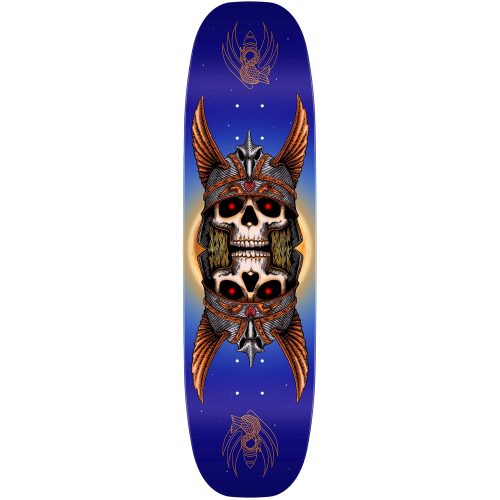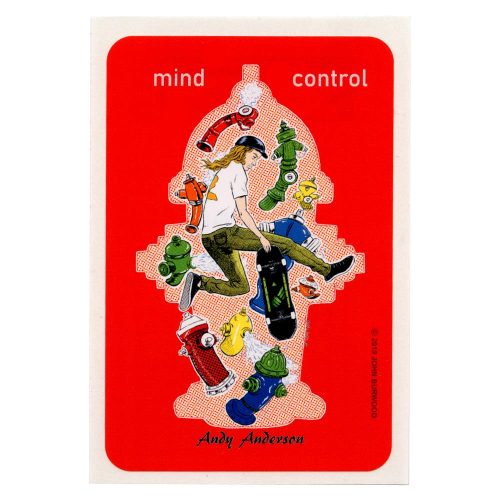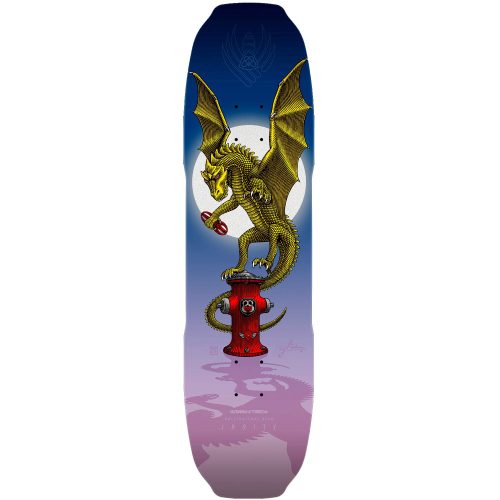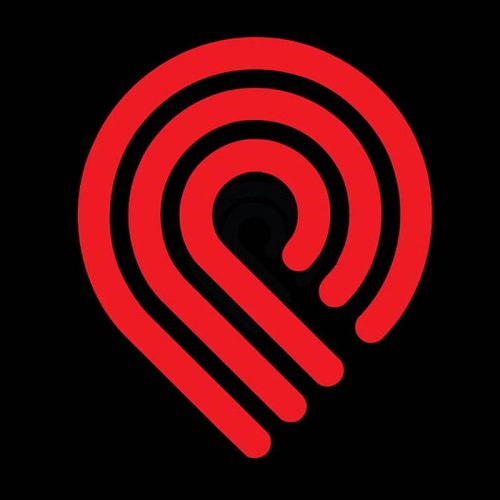
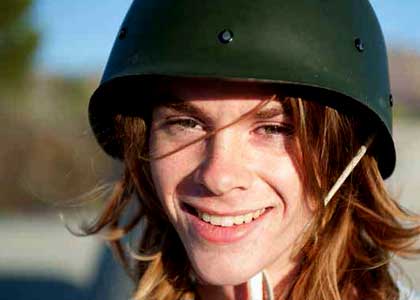 Interview by Kevin Harris
Interview by Kevin Harris
I had the pleasure of meeting Kevin Harris back in 1997. Hard to believe that’s almost 20 years ago. Kevin was instrumental in helping bring my book The Concrete Wave: The History of Skateboarding to life, and we’ve been friends ever since. When Kevin told me about Andy Anderson, a skater who effortlessly blends street, freestyle and vert skating into one incredible package, I was amazed. For me, Andy truly personifies the best of what skateboarding represents: freedom to ride, freedom to explore, but most of all the freedom to be yourself. – Ed.
I want to talk to you about where skateboarding is and where it is going and how you are going to play a part in it. How did you get into skateboarding?
I was born in North Vancouver and my parents took me to the Griffin Bowl when I was 2. It wasn’t there to skate – I think it was more of a subconscious thing. There was a nice park around the bowl as well.
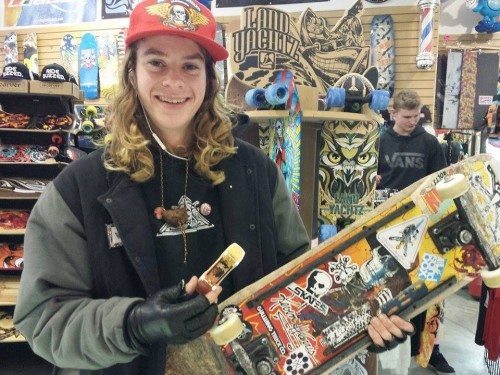
So, did they take you because of the skatepark or because of the park?
It was because of the park, but I visually got to see skateboarding at a young age.
You are the most all-around skater I’ve ever seen. You don’t care what people think. You can be old school, new school – you seem to adapt to everything.
Well, when I started skateboarding I was only 4 years old. With respect to my first tricks, I was thinking kickflips and ollies, but my body couldn’t really perform those kinds of movements on an adult-size skateboard. So my first tricks were tick-tacks and learning how balance the nose and tail. This is where I really got the feeling of the board, and it stayed this way for a number of years. I then slowly graduated to ramps. I really started in freestyle and bowl. It wasn’t until I was 8 that I could ollie, but I was flying out of the bowl 6 or 7 feet high when I was 7 years old.
The first thing that comes to mind is that almost 100% of skaters out there feel that you have to learn to ollie first. This is mostly due to peer pressure. But your story shows that you don’t have to succumb to what the crowd wants.
I think that if you are riding a popsicle-shaped board, you feel pressured to learn ollies and kickflips, and you have a hard time calling yourself a skateboarder until you can do those things. Before that you just ride around for fun. Or you can choose to longboard and do it for speed – you may never learn to ollie or kickflip. But I think people have a hard time calling themselves a skater until they can ollie.
[Do you think the industry has portrayed skateboarding as being rather difficult to get into? I mean, just take a look at what’s out there on YouTube. Being Canadian and with hockey in our blood here, I know that when you put a kid on the ice on the first time, he’s not going to put the puck in the net. An ollie is a hard trick, and it takes time to learn. You teach skateboarding; what do you show that first-timer?
A lot of people don’t realize that it took skateboarders 30 years to invent the ollie. In fact, it took a 13-year-old introvert to create the flatland ollie. When I teach a kid how to skate, I am showing him or her how to push, but also how to slow down and how 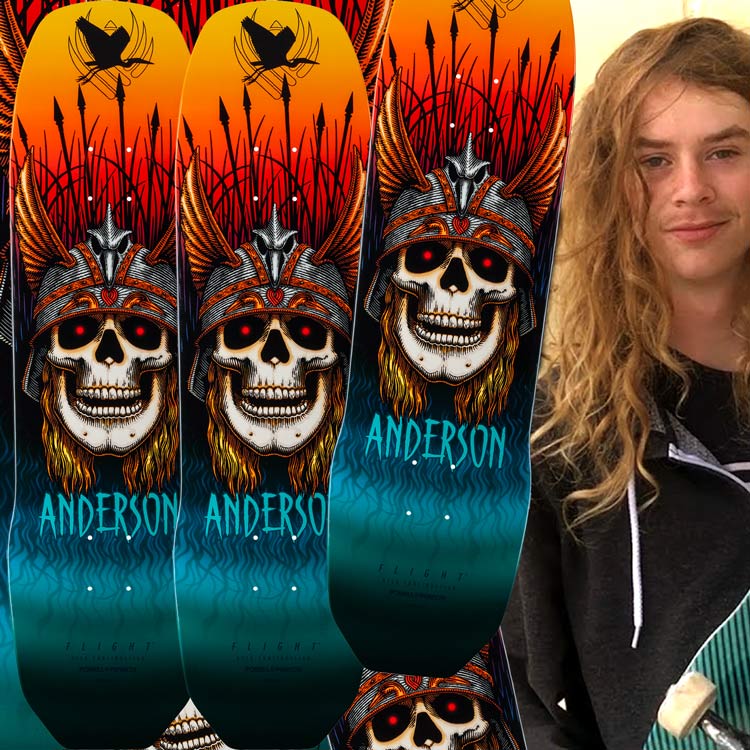 to bail. Learning how to fall is super important. A lot of kids want to skate, but they don’t want to fall – and that’s not really an option with skateboarding. I try and get all my students to jump off their board and fall properly. Some are reluctant but eventually they do it. And when they come off the board and don’t hurt themselves, they feel great and much more confident.
to bail. Learning how to fall is super important. A lot of kids want to skate, but they don’t want to fall – and that’s not really an option with skateboarding. I try and get all my students to jump off their board and fall properly. Some are reluctant but eventually they do it. And when they come off the board and don’t hurt themselves, they feel great and much more confident.
I chose to conduct this interview on behalf of Concrete Wave, but I could have done it with my own magazine (Concrete), and I chose not to. The reason is I find the magazine industry seems to be focused on core street skating, and Concrete Wave is way more open to all types of terrain and types of skaters. I’ve been involved with skateboarding since 1975, and I think that’s where the growth is going to have come from. Can you explain to me as a teenager facing a tremendous amount of peer pressure, you chose to do things that many in the core street skating world would consider uncool – including wearing a helmet.
It’s all about being able to do anything that you feel like you should be able to do. Sometimes it’s just satisfying to be able to go into a street contest and spin 10 360s. Nobody’s counting at a street contest – they’re just like “Oh, he’s spinning … oh, he’s stopped spinning.”
It’s funny that you mention 360s. If you take 300 of the best street skaters in the world, there is no way any of them are doing 10. But if we throw you into that mix, you can compete on their level as a top pro street skater and you can pull 15 360s. Tell me how that works.
Well, I am not sure that I am able to compete at a pro street level yet. I was skating at a skate plaza and I was doing pogos and other freestyle tricks. I was mid-pogo and heard someone say to his friend, “Wow, why don’t we practice that trick?” And his friend says, “Because it will look lame.” That was the end of the conversation, and I landed my pogo. I feel a lot of people got intereste
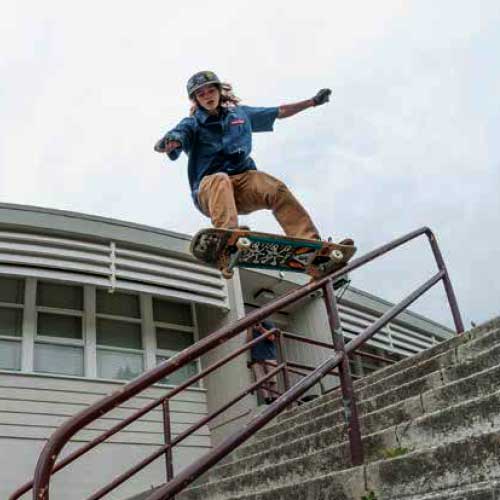
d in skateboarding because of the Rodney Mullen videos in the Tony Hawk video games. They were amazed to see his board upside down. Rodney really got people thinking.
You and I do a lot of demos together and we showcase freestyle. Some people think I want to create more freestylers. That’s not it all. It’s to create skateboarders. When I got into skateboarding it was because you can push and turn. But nowadays, a new kid gets into it and immediately has to learn how to ollie. We know one day that kid will practice ollies, but for now, it’s about having the parents move the car out of the garage so the kid can learn basic tricks. We’re the gateway.
I totally agree. I saw this guy trying to learn how to do a kickflip. He was struggling. So I asked him, “Hey, can you do a tick-tack?” And he goes, “What’s a tick-tack?” So I showed him, and he tried three of them and fell. I turned to him and said, “Feel out your board; get comfortable gaining speed and start to really understand what’s under your feet. As you do this, you’ll find it much easier to learn tricks.” I feel skaters miss out on a huge opportunity when they don’t connect with the basics.
I think you are one of the luckiest skaters on the planet. You have George Powell and Stacy Peralta behind you. Stacy has produced some of the best skateboarders on the planet. He saw things in skaters like Mullen and Tony Hawk long before anyone. The last time he worked with skaters was in the late ’80s, and now you are under his wing. You’ve gone from the Canadian guy riding for a few companies to a worldwide stage. How do you feel about all this?
I feel blessed more than I feel I deserved it. I feel lucky too. All the things that led me to go to that freestyle contest where I was spotted by George originally – well, all those things – it’s just insane. I didn’t even know it was a world contest the first year. I just showed up. I think the different styles of skateboarding come from different mindsets and ways that your brain functions.
For example, if you are more of an aggressive person and you need to get out a lot of anxiety or angst, then you can hit pool coping to really slash out your anger. You can even skate rails or ledges where there is a constant jumping and sense of making or not making a trick. But with freestylers, it’s a different mindset. When you look at a group of freestylers, they are all such individual people. They are not scared of transition, but they look at it and aren’t interested.
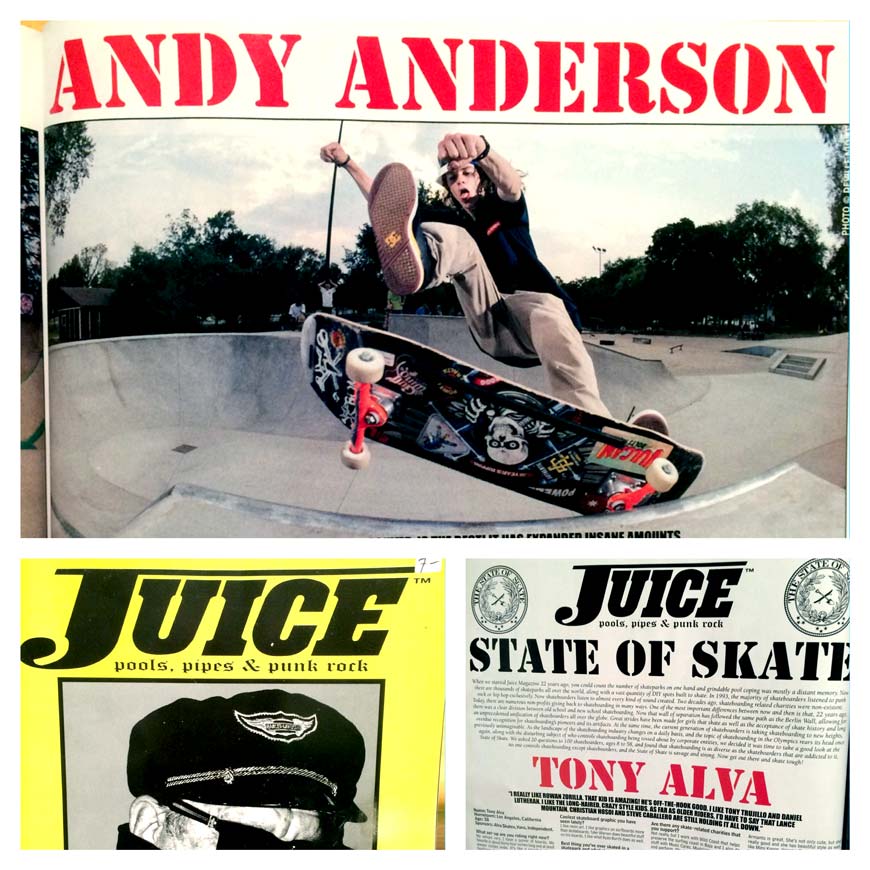 But freestylers are looked upon as the nerds of skateboarding. I mean, it’s different for me, because I’m in my 50s and [couldn’t] care less what people think. But going through your teenage years and you’ve got all that peer pressure from fellow skaters – well, I guess it must be difficult. I mean, the general public loves the type of skateboarding you do, but the core industry doesn’t get it and thinks it’s weird. I think we’ve come a long with way in the last five to 10 years, and things are more accepted. But how did you get through all this?
But freestylers are looked upon as the nerds of skateboarding. I mean, it’s different for me, because I’m in my 50s and [couldn’t] care less what people think. But going through your teenage years and you’ve got all that peer pressure from fellow skaters – well, I guess it must be difficult. I mean, the general public loves the type of skateboarding you do, but the core industry doesn’t get it and thinks it’s weird. I think we’ve come a long with way in the last five to 10 years, and things are more accepted. But how did you get through all this?
Well, I always seem to have a little bit of all the aspects of skating to back me up. I could show up at park and do a few pogos and have people make comments, and then boardslide a big rail and then something would click. Or I used to show up in full pads and instantly I’d hear people ask “What the hell is this kid doing here in full pads?” Then I’d launch out of the bowl and they’d be silent. It’s funny, but I am always trying to look like what I am not.
I think if I were you and was going to a park and was a little hesitant about busting out some freestyle moves, I think I’d start with street skating and kill the park and then, now that I have the respect, do 15 360s.
I think knowing in the back of your mind that you could do that rail gives you an inner strength. I find that people exclude a lot of things in their brain. They say things like, “I only skate like this, I only skate like that.” I find it all so limiting.
I think it’s a core thing mostly found in North America. I was in Japan five years ago and I was taken to a number of skateparks. People remembered me from the days of the Bones Brigade. So I’d launch into a freestyle routine, and the guys who were ripping in the park would come over and bust out all the old-school freestyle moves. To them, it was just skateboarding. To me, you are a rarity. You excel in all areas of skateboarding. Do you want young skaters to start to open their minds to what you’re capable of doing?
Totally. I don’t think the core is trying to get little kids onto boards. I think they are trying to keep the older generation going, but I am not sure what they are going to do after that.
“I think that fun is a huge part of skateboarding, and it’s been over-neglected recently”
When scooters came out about 15 years ago, I thought it was going to be a fad and it would be over in two years. Nowadays, I go to a local skatepark and it’s filled with more kids on scooters than people riding skateboards. I think our industry has made it way too hard for the average 10-year-old to get into it. Do you think that we need fun to come back into skateboarding?
I think that fun is a huge part of skateboarding, and it’s been over-neglected recently. I think street skateboarding was invented to be about freedom. Now you don’t need to go to a halfpipe – you can skate anywhere. But what it’s turned into is, “Oh, you need to skate perfect street. It’s all about the pursuit of perfection.” In the beginning it was the biggest wave of growth because it made things accessible for everybody. But now it’s at a point that it’s less accessible.
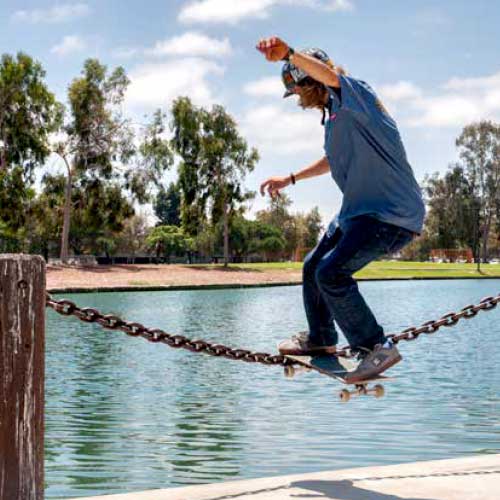 But the kid who doesn’t want to throw himself down a handrail might want to get into the flatland thing and then get his skill level up. Take a look at a place like India. There’s very little to street skate, but there are some flat, somewhat decent areas. So no matter where you live, as long as you have some flat area, you can skate.
But the kid who doesn’t want to throw himself down a handrail might want to get into the flatland thing and then get his skill level up. Take a look at a place like India. There’s very little to street skate, but there are some flat, somewhat decent areas. So no matter where you live, as long as you have some flat area, you can skate.
A lot of people don’t appreciate the longevity of freestyle. You look at the top street pros and they all seem to be in the same age category. Sure, there are a few younger guys, but most seem to hit their peak at 28 or 29, then their body starts shutting down. It takes a huge amount of effort to do a kickflip. It can be really hard on your joints. A nice stationary spacewalk, you’re flexing your muscles and it can be quite a healthy way to ride your board. You have skaters like Russ Howell, who is 66 years old, and he’s still skating so well. What 66-year-old street skater is out there?
In my mind you are a game-changer to create more skateboarders. I want to ask how you would change skateboarding in the next five years.
That’s a big question. I think skateboarding has come full circle. We already went through the Penny board phase. Longboarding has all these fast tricks going on. It’s so much easier to ride, and it handles things like little rocks and you can enjoy riding it immediately. Also, you can wear a helmet and pads in longboarding and it’s not considered uncool.
Speaking of helmets: They are nonexistent in street skateboarding. Yet you’ve worn one for your entire time as a skater. You had an ad ready to go in another magazine and they told you, “You have to remove your helmet.” What did you say in response?
“Is there any way we can do the ad with my helmet.” They said no, and I said, “Bummer.” I’ve been told not to wear them on tour. I was told it was not cool – but I wear a helmet anyway.
This is why I really admire you. The pressure on most young skaters to conform and ditch the helmet for an ad … well, you’re sticking to your guns.
Well, I’ve worn my helmet for so long and I’ve gotten as far as I have with my helmet that for me to take it off now would be stupid.
I wanted to end this interview by stating again that I think you’re a game-changer. I am proud to know you, and I am even more proud that George and Stacy have taken you under their wings. I’m excited to see your skate career going forward, and I want to be part of it. Any final thoughts?
People have to remember that every longboard trick was invented on a skateboard. The future of skateboarding is bigger wheels, all terrains, more acceptance and of course, bigger noses on the deck.
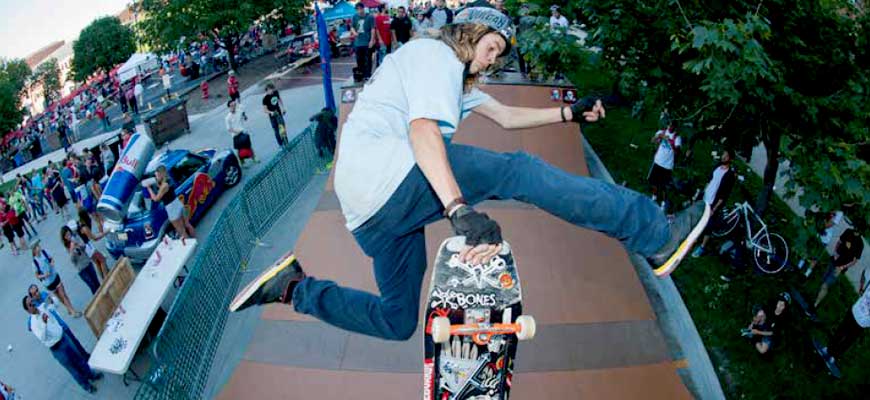
FINAL THOUGHTS FROM KEVIN HARRIS
I have been skating since 1975, when it really started taking off and having pros, skateparks, magazines, etc. I have witnessed skaters through the decades be so different and follow their own path and not give in to pressure from others on how to skate: riders like Jay Adams, Tony Hawk, Rodney Mullen, Natas Kaupas, Mike Vallely and Kilian Martin, to name a few. They were huge innovators and game-changers; they changed the way skaters skate today. Andy Anderson is another of those skaters who skates to his own drumbeat. The peer pressure he must go through and has gone through in his skating career is incredible. He skates differently than anyone else, and he wears a helmet. As a result of being such a different type of skater, he is getting worldwide attention. Some of the biggest players in the skate industry are working with him and taking notice of how talented he is. We need people to keep taking it to the next level and not worry what is cool or core, to just get out there and have fun and skate like it is an art form. Andy is one of those breeds and is always coming up with something new and exciting. I am very proud to know Andy and his great family, and I look forward to watching his career as he helps show the fun and passion and freedom to do what every skater should do: have fun and skate whatever you want. I think one day we will all look back and see how Andy was one of those guys that was a game-changer.
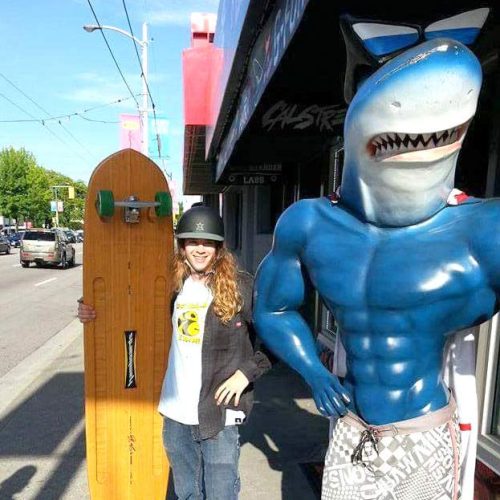 SIDEBAR Interview with Stacy Peralta about Andy Anderson
SIDEBAR Interview with Stacy Peralta about Andy Anderson
You have an eye for spotting unique talent. What did you see in Andy Anderson?
We skateboarders pride ourselves on thinking we’re open-minded and nonconformists, that we’re somehow different than others. That may be true when compared to society at large, but within skateboarding itself we are a totally conforming bunch – embarrassingly so. There are so many within the skateboarding world who look at skating as a religion which must be practiced to exacting and specific standards: You must conform and ride this type of terrain; you must conform and do these types of
tricks; you must not mix this style with that style; you must look this way or else, etc. And then once in a while a skater like Andy comes along who doesn’t fit into this fanatical mold, a skater who is such an outsider himself that he doesn’t even fit into skateboarding. He doesn’t fit in because he’s not following its false mandates. What Andy is doing is living the creed of what a skateboarder is supposed to be. He’s not conforming, nor is he looking for acceptance from conforming, and with that he’s accepting the grief and exclusion that comes with being a true outsider. That is what a
real skateboarder is.
What strikes you as the most intriguing aspect of Andy’s abilities?
His total absence of discrimination toward skateboarding. He looks at every aspect of skating as potential, which allows his mind to roam free so that he can create maneuvers and connections that we have not yet seen. Andy is committed to wearing a helmet at all times. This has impacted his career to a degree, yet he stands firm. What is your take on this? He’s on his own, far out on the periphery, and when you’re out on your own in that way it can get very lonely. It takes a strong-minded person to skate the way Andy skates. His helmet is simply a physical gesture of his resolve to be himself.
What kind of impact do you think Andy Anderson could have on skateboarding?
Because he’s smart and because he pays close attention to what is going on around him, he has the potential to follow in the footsteps of Kevin Harris and Rodney Mullen, in that he has the potential to be one of those rare skaters who builds his entire life out of skateboarding and contributes back. But this will ultimately be up to him. If he wants it, it’s his to have.
Any final comments would be welcome.
When I ran the Bones Brigade, I sponsored not only one professional freestyler but three. And I did this at a time when freestyle was considered dead and totally uncool and certainly not worth saving. The excitement and importance of freestyle had been usurped by vertical. In fact, vertical skating pretty much wiped out every other aspect of skating. But I felt it was important to keep freestyle alive, and I felt those skaters who were doing it needed support. Why? Because freestyle skating, like every other type of skating, is a language with its own vocabulary – and freestyle is skateboarding’s original language. Within that language were hidden maneuvers and connections that would someday affect so many other aspects of skating, yet at the time no one could see this; all they could see was that it was uncool. So with that in mind, can you imagine street skating today without all of the maneuvers that Rodney and the other freestylers created? This is why it’s so important not to discriminate, and this is why skaters like Andy are so important to skateboarding – because he’s helping to keep old languages alive by uncovering new pieces of our shared vocabulary.
Thankyou to Michael Brooke and Concrete Wave Magazine
The Powell Peralta “Let’s Go Skate” tour came to Boise and rider Andy Anderson shredded the Fort Boise skatepark mixing it up with his unique style throwing together a mix of old school and technical tricks including a double airwalk over the spine and a coconut wheelie on the pyramid.


